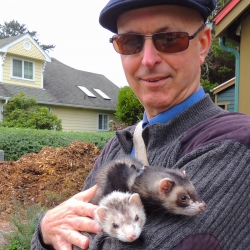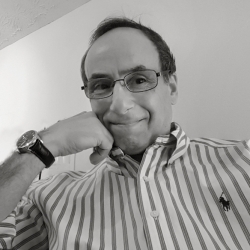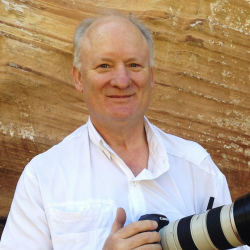Home > Topics > Site and Board Matters > New Article Announcements & Discussions > Creating Photographic Art
Creating Photographic Art
-
AuthorTopic: Creating Photographic Art Read 20138 Times
-
New Article Announcements & Discussionson: January 10, 2020 at 8:19 pm
Some might think this topic is overly simplistic. I believe it is important because it focuses directly on your expectations as a photographer. So much of what we read about and discuss are the technical components (cameras, lenses, software, etc.). Perhaps that is because what it take to be and improve as an artist is harder to define and describe. Terry is correct about art being a slower more thoughtful experience. I equate all the technology to the equivalent of a painters brush. What you do with it depends on what happens between your ears and as Terry notes, it takes time and effort.
I have struggled a very long time attempting to become an artist in a digital media. A large part of that time has been defining what it means to be an artist. If I have been successful, it is largely because of the number of good teacher I have had including Kevin Raber. This article is a good first step in the process of focusing what is important in becoming an artist. Another recent article on this site from Ignacio Palacios (Finding Balance In Your Composition) is another key part of the artistic process. I would enjoy hearing from others about their artistic journey.
Here is a link to one image I took in Bolivia last year: https://www.scottgeographic.org/Bolivia-2019/i-7Rjrm5B/A
On the road less traveled....
Re: Creating Photographic ArtReply #1 on: January 11, 2020 at 5:00 pmTerry’s point is well made. I’m reminded of a story (author unremembered but appreciated) of a guy who was driving his son home when his son looked at him and asked, “What did you do today, Dad?” “As usual, I spent the day teaching people how to draw.” was the reply. His son looked at him in horror and asked, “You mean they forget?”
Everyone is an artist.
We’ve come a long way with digital art since the earliest days. Several decades ago I was using a plotter to create graphic patterns by running sequential patterns of mathematical calculations (computerized Spirograph, sort of) and even back then there was a question as to what defined computer art. If an artist took a pen tool and drew something on the screen, was that computer art? If someone couldn’t draw in the traditional sense but they could use the tools in software to create shapes and colours and shadings, was that computer art?
Even then the questions were directed toward the tools. IQ350 or charred stick, they’re just tools. AI is the big buzzword these days. I know Luminar 4 can do sky replacement at the click of a mouse but how long will it be before people ask, “Didn’t I see your clouds on Joe’s image…?”
When Lightroom first came out people got really excited about presets, and they can be good stimulus for ideas, but I’ve always said that over-reliance on presets means all of your images look the same.
Art is about vision, and everyone gets to have an opinion. I always tell beginning photographers that if you’re shooting for a client, the client gets to decide what the final image looks like and if you’re shooting for yourself you get to decide what the final image looks like, but the best way to learn is took look at others’ work and go beyone the initial Y/N and ask yourself why. What is it you like? Why? What is it you don’t like? Why? How would you change it? There are several photographers whose work I admire, and there are others whose vision just isn’t for me. One of the former group is John Paul Caponigro. I don’t necessarily like everything he’s done, but I admire that he’s always pushing himself to expand his vision.
The secret I think is to take what we admire in others’ work and find away to use those tools and ideas in our own art. As the saying goes, “I tried to teach you to be yourself, but I find that I cannot. I can only teach you to be me, for I am the only model that I have.” ~ U/K
Mike.
Or… you could always duct tape a banana to a wall and sell it for an unseemingly large amount of money. ? Personally I’m working on perfecting the potato photograph. ?
?
_____
Mike Nelson Pedde
Victoria, BC
https://www.wolfnowl.com/Re: Creating Photographic ArtReply #2 on: January 11, 2020 at 6:45 pmMike, thanks for posting a thoughtful response. Your comment about learning from other photographers is spot on. Australian photographer Peter Eastway once suggested to me to pick 10 images from photographers I admire and examine them to identify what specifically made them special or exceptional. That provides the artistic focus and the tools are simply a means to creating the artistic impact.
Looking forward to seeing the results of your potato photograph.
Greg
On the road less traveled....
Re: Creating Photographic ArtReply #3 on: January 19, 2020 at 4:04 pmCame across this on Tumblr yesterday. It’s the photographer’s work and he’s welcome to do with it what he wants, but if I’d seen these in a gallery I’d think, “Great clouds, but interchangeable foregrounds?” To each his or her own, as the case may be.
https://expressions-of-nature.com/post/190331975116/te5seract-%C3%BCbers-feld-in-richtung-sturm
Mike.
_____
Mike Nelson Pedde
Victoria, BC
https://www.wolfnowl.com/Re: Creating Photographic ArtReply #4 on: January 20, 2020 at 7:37 amOn “Creating Photographic Art has never been easier” by Terry Gipson
Regardless to me, or anyone else who either likes or dislikes “presets” – and regardless of the ease, or alternatively, arduous process in using them, are means for the photographer (or aptly categorized, Digital Artist) to express their artistic vision. Period. In addition to “presets”, most current post-production tools (that admittedly, inundate our space) are too, for expressing a visual creation. However, as it relates to these tools as being disruptive to “creating” art, (or worse, and more accurate, disruptive to “The Art of Photography” and its preservation as a unique and proprietary art genre) is a separate, deeper and selective discourse, one that is not apparently part of this article.
In summary, the article brings up an important issue within many diverse groups of Photographers and Digital Artists, indeed. As I see it, “Presets” and all other manipulative digital software processes represent a method, and do not in any form or fashion reflect on an artist’s ability to relate their vision to the world, regardless how we categorize their work. In my opinion, the real issue is how the Extreme use of all post-production manipulative tools (including your own processes, Terry) in creating a piece of art should be Categorized: within Photography or instead, Digital and Conceptual Art, or perhaps a new category yet to be offered.
Respectively,
Lance A. LewinLance A. Lewin
-
This reply was modified 4 years, 6 months ago by
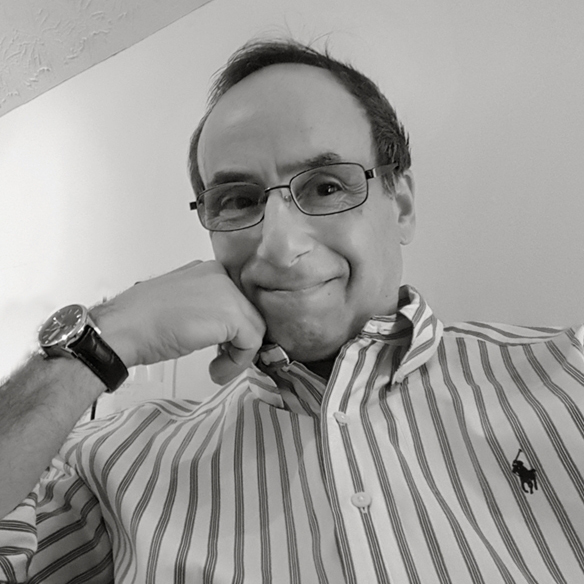 Lance Lewin.
Lance Lewin.
Re: Creating Photographic ArtReply #5 on: January 24, 2020 at 9:23 pmThanks to all for taking the time to read and respond. I learn a great deal from hearing others’ insights.
Terry Colorado USA [email protected] www.terrygipsonphotography.com
Re: Creating Photographic ArtReply #6 on: January 24, 2020 at 10:14 pmLance,
Your forum post seems to me to need more than a simple thank you and expression of gratitude, since I was specifically addressed in the post. It certainly stimulated a great amount of thought.
I admit I know nothing about you except your portrait, photos, and your written words on PhotoPXL, but many thoughts and responses come to mind after reading your forum response to my article and reviewing your content on PhotoPXL.com.
1. Submitting a post with the font in bold and even with the word Extreme in caps and italics, makes it hard to take you seriously.
2. Your not-so-subtle condescension about an artistic approach to modern photography suggests to me that you adhere to a very rigid set of limited standards. I call that mindset a film mindset, and it speaks very little to the creative opportunities afforded by digital capture, processing, and printing. The use of a digital camera and all the available post-processing tools is called a digital mindset.
You follow a film paradigm and I a digital paradigm.
3. Someone who limits their thinking to the notion that only artistic photographic prints can be produced in a traditional darkroom through film development and printing, has nothing to say to someone who has spent over a decade producing traditional (and now non-traditional) color fine art digital photographic prints. As a master digital printer, I make no critique of my fellow film photographers’ prints, as that approach is not one that I have any expertise or understanding.
Perhaps you should be more cautious when stepping into a different photographic discipline.
4. After reviewing your content, I find your images quite droll, showing nothing terribly emotional, artistic, or creative. All these qualities of a photographic image are of great value to me. The only emotion which comes across in your writing is that of disdain.
5. In one of your articles on this website you quote Ansel Adams about visualization. This is a totally ludicrous idea in the world of modern digital photography, where I can capture thousands of images and correct virtually all of them in post-processing for any errors in camera settings or other capture mistakes. I would argue that visualization in the world of modern digital photography is as antiquated and useful as shooting on glass.
Ansel Adams’ art is all about knowledge of his camera, film, and his creativity in the darkroom during the film era. Adams himself admitted his limitations as a non-color photographer, stating he just didn’t get color film photography. That is a great degree of humility for someone so well-respected and accomplished.
If you look at Adams’ body of work, his development of negatives changed over his lifetime. For instance, take his transition to gradually darker prints as he aged, as can be seen in Moon Rise over Hernandez. Adams manipulating this image through darkroom techniques multiple times, removing it farther from “reality”, just like a modern photographer who uses digital tools to create their art.
6. It appears to me that you have no formal training in photography or art. The term “self-taught” is most telling. I was previously self-taught and found I went nowhere. I approached photography and art with a great degree of hubris about how easy this would be. I just needed to read enough about real artists to be one. But my “art” looked droll, unimaginative, and frankly boring. It was only until I met some real artists that I became embarrassed and ashamed of my arrogance.
Only after understanding what I didn’t know was I able to follow a line of artistic teaching and critique. And only after many years did I begin to scratch the surface of expressing something uniquely personal in my art.
7. The limited standards to which you appear to adhere places you as a photojournalist or a minimalist taker-of-film-pictures in the categorization of photographers. There is no personal interpretation to this approach, only a documentation of “reality”. A personal style of photographic art requires an artistic frame of reference, one that is a totally different approach to photography than the one you profess.
8. You should compare your work to Weston, Cunningham, van Dyck, Steiner, and other non-painters to understand an artistic approach to film photography and stay out of the digital photography world until you have something valid to say.
9. Your notion that photography must be near reality-based in order to be considered art shows a considerable lack of understanding about art itself. Photography has evolved to a digital format. It’s a tool, as film was in its day. You also seemingly contradict your own reality-based “standards” by having a photo of a rose in black and white. How in this world does that evoke a sense of reality and authenticity? I have never seen a rose look like that!
I would ask you, is a painter who uses a canvas, brush, and paint not a painter, regardless of the final painting? Perhaps that analogy might apply to photography and promote a greater understanding and appreciation of others’ work.
10. Your sense of reality and authenticity needs to be more deeply and critically examined, as does what you think constitutes photographic art.
11. Lastly, to imply that another person’s work is not authentic, because it violates your outdated notions of what is photographic art, is frankly the height of your hubris.
Whew! That was a lot of thought. I have to go take a nap…
Terry
Terry Colorado USA [email protected] www.terrygipsonphotography.com
-
This reply was modified 4 years, 6 months ago by
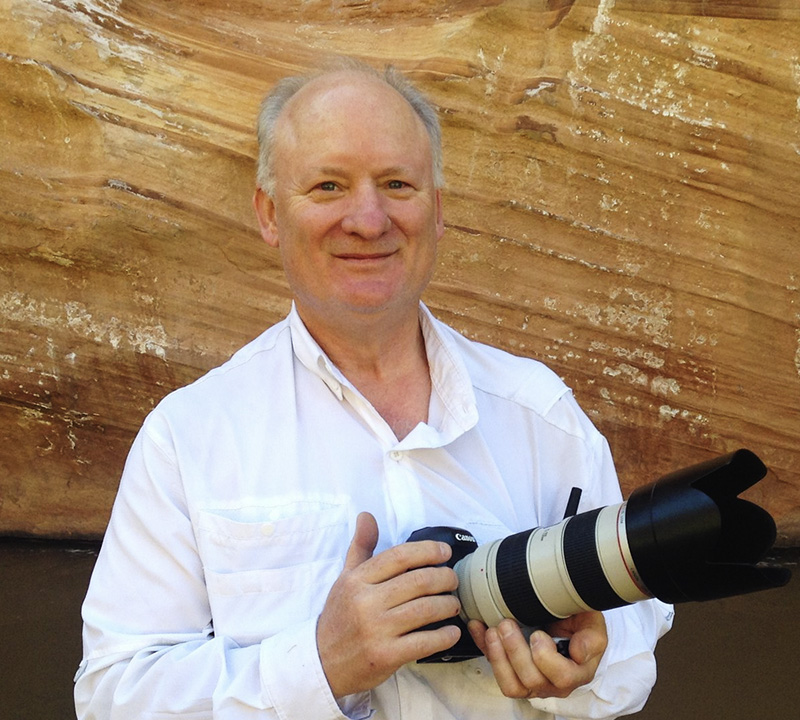 Terry Gipson. Reason: poor formatting
Terry Gipson. Reason: poor formatting
-
This reply was modified 4 years, 6 months ago by
 Terry Gipson. Reason: poor formatting
Terry Gipson. Reason: poor formatting
-
This reply was modified 4 years, 6 months ago by
 Terry Gipson. Reason: poor formatting
Terry Gipson. Reason: poor formatting
-
This reply was modified 4 years, 6 months ago by
 Terry Gipson.
Terry Gipson.
-
This reply was modified 4 years, 6 months ago by
 Terry Gipson.
Terry Gipson.
-
This reply was modified 4 years, 6 months ago by
 Terry Gipson.
Terry Gipson.
Re: Creating Photographic ArtReply #7 on: January 24, 2020 at 11:03 pmGreg,
“I have struggled a very long time attempting to become an artist in a digital media.”
That is a statement in which I find a great kinship.
There seems to be an endless number of photographers now. 100 years ago, there were few. Now everyone has a phone and/or camera and can take a picture, or more precisely, an image, since it rarely gets made into a tangible and palpable form.
How do I show my work as unique and at the same time personal? Do I want to follow the work of others or express something unique? Those have been underlying questions in my photographic journey. I did not know them at first, but they became slowly clearer as time went on.
My journey seems to have been a path of moving from one question to another.
I have no answers, only experience. I know how limited that may be, since I am only one in 7.8 billion people on this planet.
Regardless of my infinitesimally small voice, I would encourage you to follow your own artistic desires and vision.
After nine years of diligently trying to make my photographs unique and personal, I had an epiphany while editing and processing yet another image from the Southwest US. From that odd experience onward, my work changed. That experience came uninvited.
Over the last year I have begun to modify, even transform, my work to something I consider “my own”. It is photography with “me” injected in it. It is whimsical, lyrical, and even fantastic at times. Yet that is what I want to express in my photography.
My work has not been readily accepted, as displayed in Lance’s comments on this thread. Yet it is my own. One eventually has to accept that my art is my own. For in the greater reality, it is nothing more. On the other hand, the voice of the artist has been needed as long as we have been on this planet.
Thanks for sharing your thoughts! And I wish you well!
Terry
Terry Colorado USA [email protected] www.terrygipsonphotography.com
-
This reply was modified 4 years, 6 months ago by
 Terry Gipson.
Terry Gipson.
-
This reply was modified 4 years, 6 months ago by
 Terry Gipson.
Terry Gipson.
Re: Creating Photographic ArtReply #8 on: January 24, 2020 at 11:20 pmMike,
Your point is well taken. That link seems to have moved from traditional landscape photography into an artistic presentation. Both were photographs, but in the final image, they were no where close to “reality”.
Hence the dilemma of digital photography!
Your statement “To each his or her own, as the case may be.” is the crux of what is the distinction between what is art and what is documentary photography.
Terry
Terry Colorado USA [email protected] www.terrygipsonphotography.com
Re: Creating Photographic ArtReply #9 on: January 24, 2020 at 11:27 pmMike,
Your Reply #1 is remarkably succinct and clearly-worded explanation of photography-for-others vs photography-for-myself. Well done!
Terry
Terry Colorado USA [email protected] www.terrygipsonphotography.com
-
This reply was modified 4 years, 6 months ago by
 Terry Gipson.
Terry Gipson.
Re: Creating Photographic ArtReply #10 on: January 30, 2020 at 7:23 amThe only item I will respond to is the Bold text: in my post above the entire piece was written within MSW, as such, transferring the work over to be printed here, is too small (likely because of the font I am using, I have no idea), so I add “Bold” so it can be read more easily.
LAL
Lance A. Lewin
-
This reply was modified 4 years, 6 months ago by
 Lance Lewin.
Lance Lewin.
Re: Creating Photographic ArtReply #11 on: January 30, 2020 at 8:55 pmThanks for responding Lance!
Like the printed work, what is seen is what is interpreted.
Terry Colorado USA [email protected] www.terrygipsonphotography.com
-
This reply was modified 4 years, 6 months ago by
-
AuthorPosts
- You must be logged in to reply to this topic.


